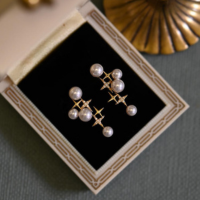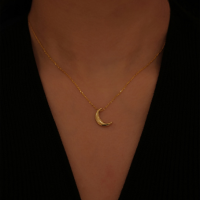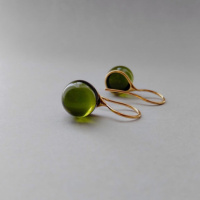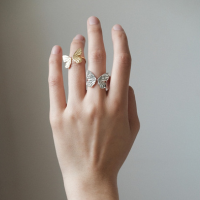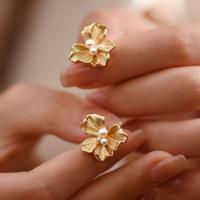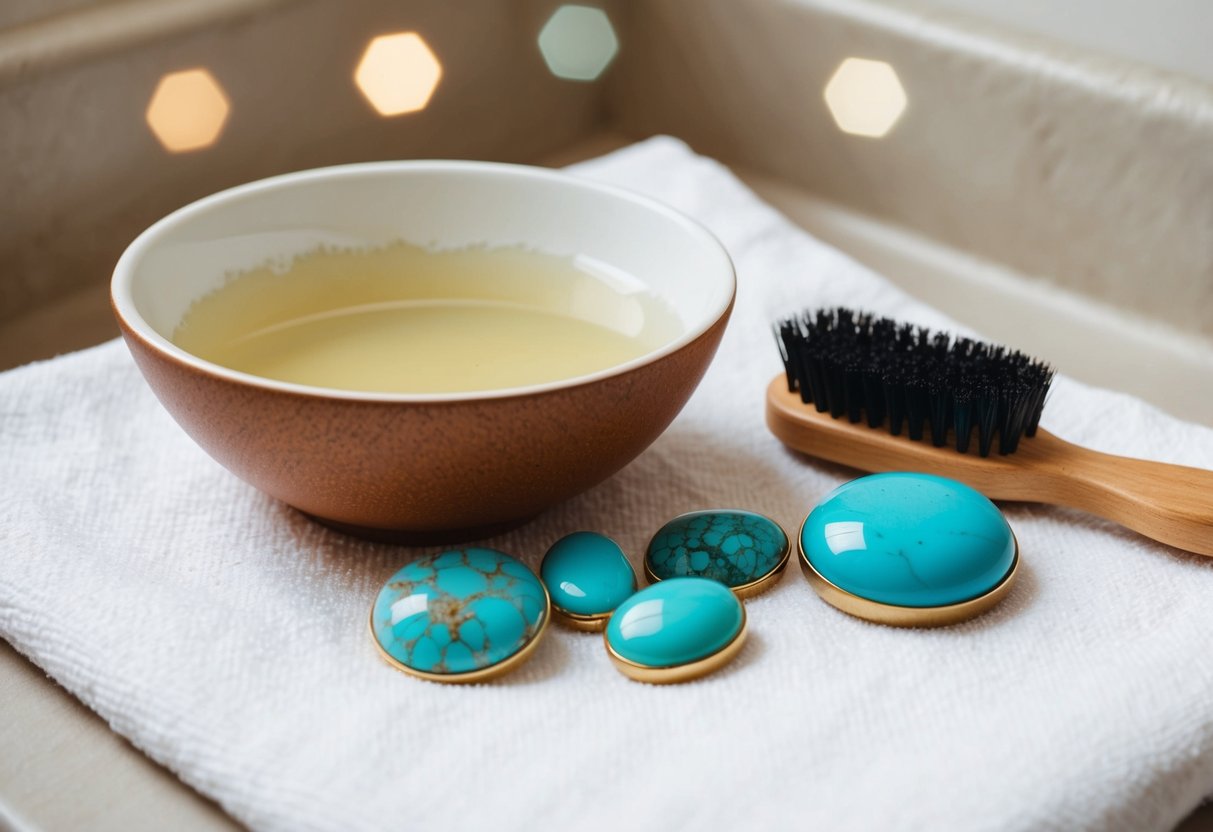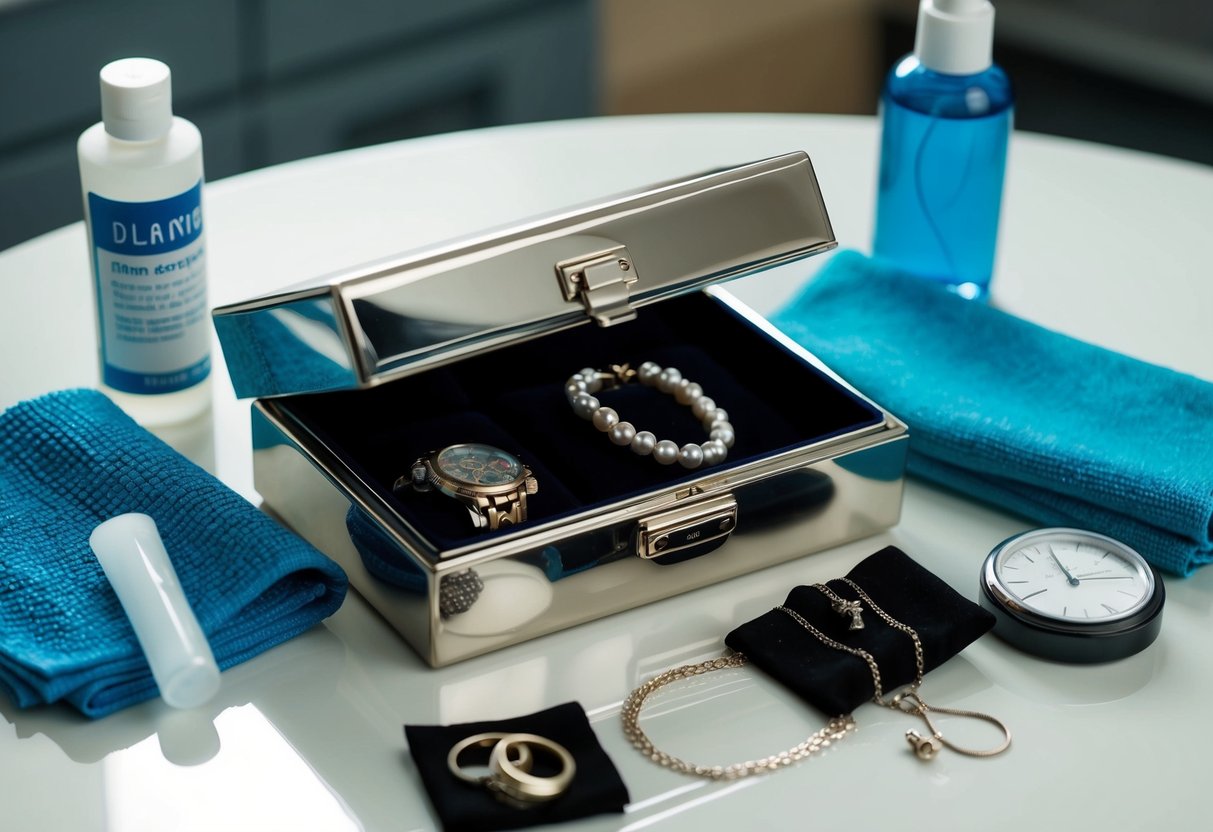
How Long Does Stainless Steel Jewelry Last
Check out our personalized jewelry collections! (kids drawing jewelry, coin jewelry, wire jewelry, fingerprint jewelry, handwriting jewelry, and more)
Stainless steel jewelry has become a favorite choice due to its shining appearance and resilience. Many of us wonder about the lifespan of these pieces, especially when compared to other materials. Stainless steel jewelry can last a lifetime if taken care of properly. This feature makes it an attractive option for those who love lasting, beautiful accessories.
When discussing the longevity of stainless steel jewelry, we must consider different factors. The way we care for and maintain our pieces plays a big role. Lifestyle choices, such as exposure to harsh chemicals or physical activities, also impact how long our jewelry will shine and resist wear.
Comparing stainless steel to other metals highlights its benefits. It stands out for its durability and easy maintenance. Many people also appreciate its affordable price while still offering options for personalization and unique styles.
Key Takeaways
- Stainless steel jewelry can last a lifetime with proper care.
- Lifestyle and maintenance affect jewelry longevity.
- It offers durability and personalization compared to other metals.
Stainless Steel Jewelry Overview
Stainless steel jewelry is popular for its durability and resistance to tarnish. Many people prefer it due to its strength and sleek appearance, making it a staple in both casual and formal wardrobes.
Composition of Stainless Steel
Our stainless steel jewelry is made from an alloy, mainly iron, chromium, and nickel. Chromium is key for resisting corrosion. To make it more durable, it's mixed with other metals. The composition is important because it ensures the jewelry can withstand daily wear.
Some pieces may also have other metals like titanium to enhance strength. This blend makes stainless steel a top choice for those looking for both function and style. It's important to avoid prolonged exposure to water or chemicals to ensure long-lasting shine.
Popular Types of Stainless Steel Jewelry
We offer a variety of stainless steel jewelry options. Common pieces include necklaces, bracelets, rings, and earrings. These pieces suit different styles, from modern to classic. Stainless steel's versatility makes it easy to match with other accessories.
Charm bracelets and engraved pendants are popular for personalization. Men’s pieces often feature bold designs, whereas women’s pieces might include intricate patterns. With many options, stainless steel offers something for everyone looking to enhance their fashion statement.
Durability Factors
Stainless steel jewelry is known for its strength and lasting shine. Its durability depends on various factors such as its physical properties, resistance to corrosion, and how well it stands up to scratches and tarnish.
Physical Properties
Stainless steel is a strong and sturdy material. It resists bending and breaking, making it a great choice for everyday wear. The alloy is composed of iron, chromium, and other metals. Chromium is key because it helps create a shiny surface and protects against rust.
For jewelry, different grades of stainless steel are used. 316L is popular because it's hypoallergenic and resistant to tarnishing. We often recommend this for people with sensitive skin since it's less likely to cause irritation or discoloration.
Moreover, stainless steel's density adds to its toughness but keeps it lightweight. This makes our jewelry comfortable to wear while remaining resilient to dings or damage from drops.
Corrosion Resistance
A standout feature of stainless steel is its resistance to rust. This is due to the chromium content, which forms a protective layer on the surface. Even in moist or humid conditions, stainless steel maintains its appearance.
Being exposed to water often doesn't harm it, making it ideal for rings, bracelets, or necklaces. It's a good choice for those of us with active lifestyles or who may wear jewelry during workouts or outdoors.
Seawater, though, can affect even stainless steel over time. For beach trips or ocean swimming, it's wise to clean and dry your items post-exposure to maintain that fresh look.
Scratch and Tarnish Resistance
Stainless steel shows good resistance to scratches compared to softer metals like gold or silver. Regular wear brings minimal impact; daily bumps and brushes won’t dull its finish easily. This toughness keeps our pieces looking new for longer.
Tarnish isn’t a major issue with stainless steel. Unlike silver, it doesn’t react readily with oxygen or sulfur. So, we can wear it without worrying about it turning colors or losing shine over time. Buffing occasionally can restore any lost sheen.
For jewelry lovers who desire minimal fuss, stainless steel is a smart choice. Its ability to withstand wear while staying beautiful is what makes it favored in our collections.
Proper Care and Maintenance
To ensure our stainless steel jewelry stands the test of time, it's vital to maintain it properly. This requires cleaning, storing, and routine checks. Here's how we can keep it looking its best:
Cleaning Techniques
Keeping our stainless steel jewelry clean is simple. A soft cloth and mild soap create a great team for this task. We should gently wash each piece and rinse it under warm water. Drying is crucial, so be sure to pat it dry with a towel to prevent water spots.
For persistent dirt, a soft-bristle toothbrush can help. Light scrubbing around crevices will do the trick without scratching. Lastly, a microfiber cloth buffs up the shine nicely, leaving our jewelry sparkling.
Storage Solutions
Proper storage keeps our stainless steel jewelry scratch-free. Using a jewelry box with individual compartments or a soft pouch works wonders. This prevents pieces from clinking against each other.
We should consider storing it away from direct sunlight and moisture to avoid tarnishing. A dry place is best. Adding a silica gel packet can help control humidity, offering additional protection for our treasured items.
Routine Maintenance Tips
Regular checks help us catch potential issues early. Inspecting clasps and links for wear ensures everything is secure. Also, keeping away from harsh chemicals is essential. Perfumes and cleaning products can dull the finish.
Occasional professional cleaning might be needed for heavily worn pieces. A jeweler can restore the shine and ensure everything's in top condition. By following these simple steps, our stainless steel jewelry will always look its best.
Lifestyle Considerations
When it comes to the longevity of stainless steel jewelry, the way we live our lives plays a big role. Our daily activities and the environments we expose our jewelry to will affect its lifespan. For the best results, we need to think about how we wear and care for our pieces.
Daily Wear and Tear
As with any accessory, stainless steel jewelry experiences wear and tear. We might find small scratches appearing over time if we wear our jewelry every day. This is especially true for rings and bracelets that come into contact with surfaces more often.
Despite these surface changes, stainless steel remains durable. It's resistant to corrosion, unlike other metals. Keeping our jewelry shiny might require occasional cleaning with a soft cloth. It’s a simple step that can help maintain its beauty.
Exposure to Chemicals and Saltwater
We need to consider what our jewelry is exposed to during activities. Harsh chemicals, like those found in cleaning products, can dull the finish. It's best to remove jewelry when using such products.
Saltwater, too, can affect stainless steel over time. If we’re swimming in the ocean, it’s a good idea to rinse off jewelry with clean water afterward. This simple practice helps protect the material and keeps it looking vibrant even during active lifestyles.
Impact of Environmental Factors
When it comes to stainless steel jewelry, humidity can play a big role. In moist areas, we might notice a slight dullness over time. Keeping jewelry dry after use helps, but don't worry—it takes a lot to make stainless steel lose its shine.
If we love swimming, we should be cautious. Chlorine in pools might cause small changes. It's best to remove our jewelry before a swim to preserve its luster.
Pollution is another factor. In cities with heavy pollution, the air can slowly affect our pieces. A quick wipe with a soft cloth can help maintain the shine.
Our love for the beach may also impact our jewelry. Saltwater can be harsh, so rinsing off our pieces with fresh water after a beach day is a good practice.
Sunlight can contribute too. Although stainless steel is strong, constant exposure to intense sun might lead to small changes. Storing jewelry in a shaded spot can help keep it looking great.
Estimating Jewelry Longevity
Stainless steel jewelry is known for its durability and resistance to tarnish, but it isn’t immune to wear. Over time, even the toughest pieces can show signs of age. By understanding these changes, we can determine when it's time to update our collection.
Signs of Wear
Stainless steel jewelry can last for many years, but over time, scratches and fading may appear. We might notice minor scratches on rings or bracelets, especially when worn daily. While these marks don't always affect the piece's structure, they can change its look.
Another common sign is the loss of shine. Stainless steel should sparkle under the light, but as the years pass, it might lose some of its brightness. Keeping it clean can help, yet sometimes the shine just fades with constant wear. Additionally, look for any discoloration, especially in pieces with additional materials like gems or platings which may not age as well as the metal itself.
We should pay attention to any joints or clasps. These areas often endure more stress and may start loosening or not closing properly, giving us a hint that repair or replacement might be needed soon.
When to Replace
Knowing when to replace our stainless steel jewelry depends on more than just appearance. Pieces should fit comfortably without pinching or slipping off. If size becomes an issue, it could mean it's time for a new fit. This might happen due to changes in our bodies or the piece itself.
Frequent wear and tear might lead to broken or bent parts. If repairs outweigh the sentimental or practical value, replacement might be best. Additionally, allergic reactions or skin irritations could be our body's way of saying to switch jewelry.
Replacing doesn't always mean loss; it can mean an upgrade or a style change. Whether it's updating to a newer design or simply refreshing our collection, knowing when to say goodbye can keep our style fresh and secure.
Stainless Steel vs Other Metals
When choosing jewelry, it's important to think about what each metal offers. Stainless steel, silver, and gold each have their strengths and challenges. Their durability, appearance, and cost differ significantly, influencing our decision based on personal needs and preferences.
Comparing with Silver and Gold
Stainless steel is known for its durability. It resists scratches and tarnish better than silver. While silver has a classic, elegant look, it needs regular polishing to maintain its shine. Gold, on the other hand, is prized for its luxurious appeal and is often used in high-end jewelry. Though it's softer and can scratch or bend more easily than stainless steel, it's more malleable, allowing for intricate designs.
Stainless steel is hypoallergenic, making it a great choice for those with metal allergies. Silver and gold can sometimes cause reactions, depending on the alloy or mix used. Stainless steel offers a practical option for everyday wear without compromising on style. We can enjoy the shine without frequent upkeep.
Fashion Trends and Metal Preferences
Fashion trends often sway our choices in jewelry metals. Stainless steel is popular for its sleek look and affordability. Modern designs benefit from its clean lines and industrial appeal. It fits well with both casual and business attire. Silver is timeless and often used in vintage or boho styles, providing a softer, more traditional look.
Gold remains a classic favorite, especially in fine jewelry. Its rich color adds warmth and prestige to any piece, making it a statement choice for special occasions. When considering fashionable choices, both stainless steel and silver can be mixed and matched for versatile jewelry collections, while gold often stands alone. Our preferences are personal, based on style and how often we wear jewelry.
Benefits of Choosing Stainless Steel
Stainless steel is a great choice for jewelry lovers. Its shine lasts a long time, and it does not fade easily. We can count on it to keep looking new for years.
One important benefit is its durability. Stainless steel does not scratch or dent easily, which means we can wear it every day without worry. It is also resistant to rust, so it can handle wet conditions.
Another fantastic point is its affordability. Compared to gold or silver, stainless steel is more budget-friendly. This allows us to enjoy stylish jewelry without spending a lot.
Hypoallergenic properties make stainless steel suitable for sensitive skin. We can wear our favorite pieces without causing irritation or discomfort.
Cleaning is a breeze with stainless steel jewelry. A little soap and water can make our pieces sparkle like new. This simplicity adds to its appeal, especially for busy people.
Stainless steel is versatile for different styles. Whether we like a modern look or classic designs, there are plenty of options available. It works well with other materials too.
Lastly, stainless steel is an eco-friendly option. It can be recycled, which means choosing it supports our efforts to be environmentally conscious. This makes us feel good about our fashion choices.
Customization and Personalization Options
Stainless steel jewelry is not only durable, but it also embraces creativity. We have the chance to make each piece unique to us.
Engraving
One popular way to personalize jewelry is through engraving. Whether it's a special date, name, or message, engraved details add a personal touch.
Finishes and Textures
We can choose different finishes for our pieces. Matte, polished, or brushed options can tailor the look to fit our personal style.
Gems and Stones
Adding gems or stones is another option. Whether we prefer birthstones, diamonds, or other stones, these can be set into our jewelry for a splash of color and meaning.
Styling Options
We offer charm bracelets and pendants that can be mixed and matched. Choosing different charms or pendants lets us change the look to fit any occasion.
Size and Fit
Our stainless steel pieces can often be adjusted or chosen in different sizes. Ensuring the right fit makes our jewelry comfortable and stylish.
DIY Kits
We could also explore DIY kits that allow us to create custom pieces at home. These kits often include beads, chains, and clasps to craft a distinctive design.
Benefits of Custom Pieces
- Unique Expression: Customization allows for pieces that reflect our personality.
- Sentimental Value: Customized jewelry often holds more personal significance.
- Gifting Options: Personalized items make thoughtful gifts for loved ones.
Frequently Asked Questions
Stainless steel jewelry offers durability and style. Let's explore how long it lasts, how it interacts with skin, its water resistance, maintenance tips, and its performance compared to gold.
What is the expected lifespan of stainless steel jewelry when worn regularly?
Stainless steel jewelry can last many years, maintaining its shine with minimal fading or scratching. Its lifespan is lengthy, thanks to the alloy's strength and resistance to rust and tarnish.
Can wearing stainless steel jewelry cause skin discoloration?
Stainless steel is generally hypoallergenic and doesn’t usually cause skin discoloration. This makes it a popular choice for those with sensitive skin. It's free from elements like nickel, which can irritate some people.
Is it safe to wear stainless steel jewelry in water or during a shower?
Yes, stainless steel jewelry is resistant to water and won't rust or tarnish easily. While it's safe to wear in the shower, removing it during prolonged water exposure can help maintain its original appearance.
Are there any notable disadvantages to choosing stainless steel for jewelry?
One downside is that stainless steel cannot be resized easily due to its hardness. It may lack the prestigious appeal of gold or platinum, which some prefer for special occasions.
What maintenance is required to ensure the longevity of stainless steel jewelry?
Keeping stainless steel jewelry clean is simple. Using a soft cloth to wipe it down after wear and avoiding harsh chemicals will help keep it looking its best for years.
How does stainless steel compare to gold in terms of tarnishing over time?
While gold is prized for its beauty, it can tarnish and may require polishing. Stainless steel remains untarnished, providing a low-maintenance alternative that retains its luster with little effort.

